Have you ever gotten a DNA test? Many businesses offer home testing kits, allowing you to mail in a small sample of your saliva. Laboratories can analyze this material and can sometimes determine the location and ethnicity of your ancestors. Some companies offer to tell you the amount of Neanderthal DNA you have. But who exactly were these Neanderthals, and why do we have traces of their DNA in our genomes?
The views expressed in this article reflect those of the author mentioned, and not necessarily those of New Creation.
The Discovery And Naming of the Neanderthals
Joachim Neander was born in 1650 in the town of Dusseldorf, Germany. His interest in theology eventually led him to become the assistant minister of the German Reformed Church in Dusseldorf. Joachim enjoyed hymn writing and found nature to be a constant inspiration. Sometimes, he would preach at outdoor gatherings in a nearby valley. Theological issues led to his suspension from the ministry in 1677. Legends say that he was banished from the town and lived in a cave. These tales are probably false, considering that he repented and returned to the church only 14 days after being suspended. The valley in which Joachim reputedly stayed became known as the Neanderthal (or Neander Valley) after his death.

Early in the 19th century commercial limestone quarrying began in the Neander Valley. One day in 1856 workmen uncovered a cave called Feldhofer Grotto. Bones littered the floor of the cave. The workmen retrieved some of the bones, but the foreman didn’t recognize that they had found human remains and gave them to Johann Carl Fuhlrott. Fuhlrott was a teacher at the gymnasium in nearby Elberfeld. He recognized that the fossils were indeed those of a unique human. Johann brought the bones to Herman Schaffhausen, a professor of anatomy. Together, they announced the discovery in 1857. We now refer to these bones as Neanderthals, named after the valley where they were first discovered.
Neanderthal Skeletal Characteristics
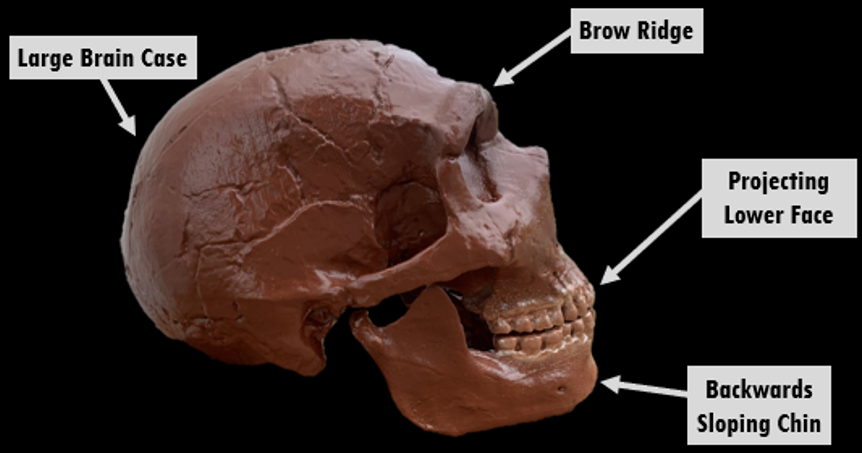
Neanderthals had many unique physical features which distinguish them from living people. Some of the most noticable differences come from their skulls, which are strikingly large, and have an elongated appearance. Neanderthals had consistently larger brains than modern humans. The rear of their skull bulges outward, forming what is called an occipital protuberance. Neanderthals did not have a tall, flat forehead like modern humans. Instead, they had a bony ridge which draped over both their eyes. The nasal bones of these people are usually quite large, showing that their noses may have been particularly large. The rest of the skeleton is also characterized by unique morphology. Neanderthals were consistently shorter than modern people, and their limb bones were usually thicker with larger joints. Overall, Neanderthal morphology consistently falls outside of the range of variation seen in modern humans.
Neanderthal Culture
The cultural artifacts associated with Neanderthals show that they were intelligent beings. Excavations in Croatia have discovered eagle talons which show evidence of being modified for use in jewelry. Stone tools like scrapers, awls, and spear points have all come to light at Neanderthal sites. We also know that they made wooden tools, possibly hardening them with fire.
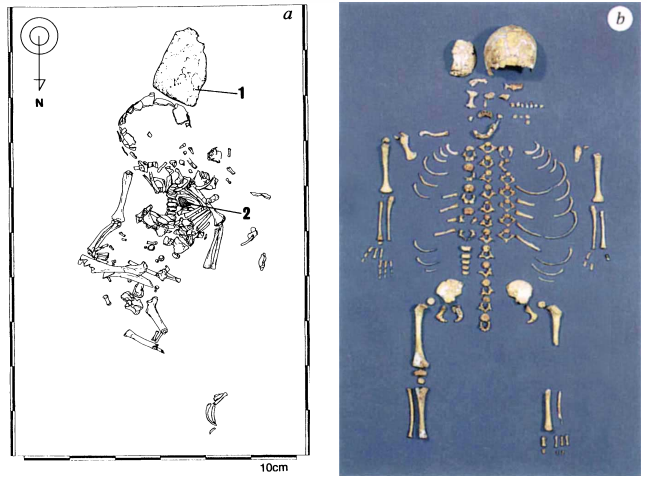
Many famous Neanderthal sites may represent burials. One example comes from Dederiyeh Cave, Syria, which yielded the remains of an infant. The skeleton of this juvenile lay in a typical burial position with a limestone slab overtop its head. Jack Cuozzo, a creationist who examined some of the original Neanderthal fossils, observed traces of red ochre on their bones. We know that many ancient cultures used this mineral symbolically, so it seems likely that Neanderthals had similar motives.
The Early Scientific Reaction to the Neanderthals
William King was responsible for naming the species Homo neanderthalensis. He published his landmark work, “The Reputed Fossil Man of the Neanderthal” in 1863. King singled out specific morphological features by which he distinguished Neanderthals from modern humans. He observed that, “The skeleton, or rather, as much as is preserved of it, is characterized by unusual thickness, and a great development of all the elevations and depressions for the attachment of the muscles.” After pointing out particular features of the cranium, King went on to dismiss the idea that the morphology was the result of “idiotcy” or cranial binding.
Charles Darwin found the Neanderthal fossils fascinating. In 1864, he had the opportunity to see an original skull, when a famous anatomist brought a fossil from Gibraltar. Despite his interest, Darwin barely mentioned the Neanderthals in his work on human evolution, “The Descent of Man.”
Were Neanderthals Just Sick People?

In their attempt to argue that Neanderthals are fully human, some people have attempted to minimize the differences which separate them from us. These ideas stem from the work of Rudolf Virchow, a 19th century anatomist. Virchow’s examinations of the bones from Feldhofer Grotto led him to believe that Neanderthals were simply modern humans, albeit ones diseased by rickets. Virchow’s hypothesis is incorrect on several levels.
Rickets is a disease caused by a lack of Vitamin D, usually because of dietary problems or limited exposure to sunlight. Vitamin D plays an important role in the human body regulating calcium levels. Deficiency causes the body to drain calcium from the bones, making them weak and flexible. The limb bones of patients become bowed over time because of their body weight. Virchow observed that the Neanderthal femur (or thigh bone) had a distinctive curvature, and supposed that it must have been the result of this disease. However, the Neanderthal femur was curved in quite a different direction than those of rickets patients. In addition, the Neanderthal bones were usually thicker and stronger than the bones of modern humans, not at all like the weak flexible bones of people with rickets.
Were Neanderthals Very Old?
Dr. Jack Cuozzo has argued that Neanderthal features were the result of their extreme age. He believed that Neanderthal fossils represent some of the early patriarchs who were living for hundreds of years immediately following the Flood. Cuozzo’s work drew from the research of Dr. Jarcho of Moscow University, who pointed out that as individuals age their heads grow longer and wider.
One argument against this theory is that Neanderthals are too late in the fossil record to have lived such long lives. The Genesis 11 genealogy shows that the life spans of the patriarchs decreased rapidly following the Flood. Neanderthals appeared so late after the Flood that their life spans were probably no longer than that of modern humans. None of the patriarchs born after the Flood lived to the age of 500.
The presence of juvenile Neanderthals effectively undermines Cuozzo’s theory. If their distinctive features were the result of old age, they should not be present in young individuals. Although juvenile Neanderthals do not have fully developed features, they are clearly distinct from modern humans of comparable age.
Neanderthal DNA
The sequencing of the Neanderthal genome began with the original Neanderthal fossil from the Neander Valley. This fossil yielded a fragment of the mitochondrial DNA which was published in 1997. In 2010 the first whole genome sequence of a Neanderthal was published. Examining the DNA of living people shows that we are all about 99.999% identical. In comparison, Neanderthals shared 99.7% of their DNA with us. In Eurasian humans, about 1-4% of the genome can be traced back to Neanderthals. This means that our Homo sapiens ancestors interbred with Neanderthals.
Some of their unique genes likely caused physical differences. One gene enabled their blood to clot quickly, which is helpful because it means that there is minimal blood loss in emergency situations. Some scientists believed that Neanderthals were particularly prone to having red hair because of a certain gene they had. However, this gene appears in modern humans, and does not always lead to having red hair. Genetic analysis of Neanderthals has found that most Neanderthals did not have red hair.
Although Neanderthals shared most of their DNA with modern humans, they regulated it differently. Methylation is a process by which the cell restricts the creation of certain proteins. In 2014 the journal Science published a paper which provided a methylation map of the Neanderthal Genome. This research shows that Neanderthals regulated their HOX genes, which are fundamental to embryonic development, differently than modern humans.
Neanderthals Were Adapted to Cold Climates
Compared to modern humans, Neanderthals had very large bones and muscle attachment sites. These people were also consistently short and stocky compared to average modern people. These proportions are probably the result of climate adaptation. Many mammals have adapted to cold climates by having thicker limbs and larger bodies, which hold heat better.
How do Neanderthals Fit Into a Creationist Timeframe?
As a creationist, I believe that God specially created humans on the 6th day of creation. Genesis 3:20 says, “The man called his wife’s name Eve, because she was the mother of all living.” Since Neanderthals are human, this means that even they must be descendants of Eve. Their fossils come from rock layers which many creation geologists have identified as post-Flood. This means that Neanderthals may have been early inhabitants of Europe and Western Asia following the Flood. After the Flood, humans spread over the earth in small family groups, which created many morphologically distinct people groups during this time period.

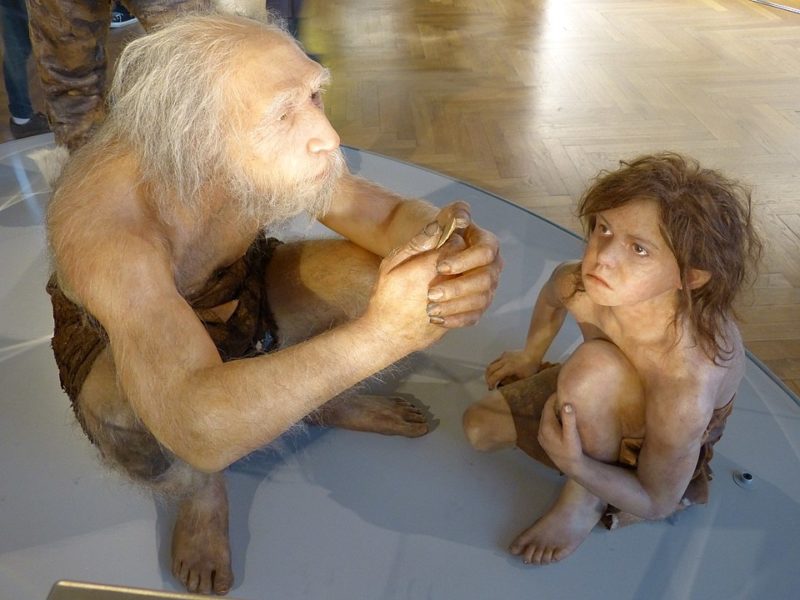
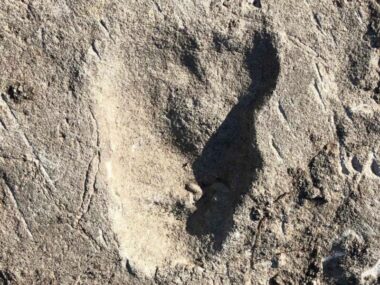

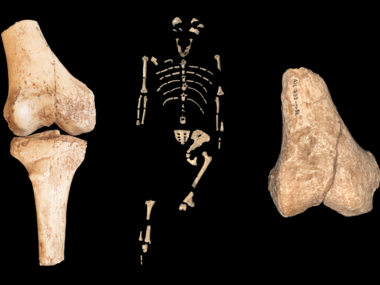
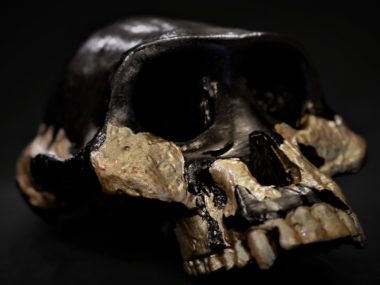

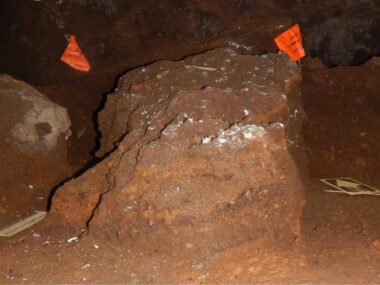




Interesting summery with good research. There are no such people as these neanderthals. Its a dumb myth. they wewre just regular people in some language group post flood. The skeletons are still too few to decide things. The bible explains and we see great diversity in people. There were post flood giant peoples and etc so easily these are , if these facts are correct, just tough mountain people.thier bodies possibly adapted to ares they lived in.
If they ever find a skeleton of a woman then did she have pain at childbirth by examining deytails. All women do have pain from the way thier body is and no animal females do.
Were Neanderthals really shorter than modern people, or were they just shorter than modern Americans? I ask this question because the stature of modern humans varies consideraly over the world today?
Well written article. Very cool how they got their name from the valey and how the valey got it’s name from a christian responsible for some hymns we sing today. Nice to see a young person taking interest in these subjects.